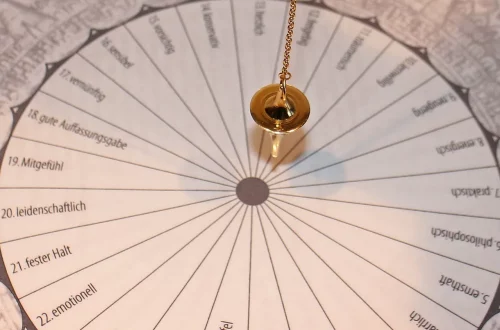
Understanding the Conversion from Pounds to Tablespoons Made Easy
Understanding the conversion between pounds and tablespoons can be a crucial skill for both amateur and seasoned cooks. In the culinary world, precision is key, and understanding how to translate weight into volume can make a significant difference in the outcome of your dishes. Whether you’re baking a cake, preparing a sauce, or measuring ingredients for a savory stew, knowing how to effectively convert these units helps ensure that your recipes turn out just right.
While pounds are a unit of weight commonly used in the United States and some other countries, tablespoons are a unit of volume widely recognized in recipes. This can sometimes lead to confusion, especially when ingredients are listed in different formats. It is essential to grasp the relationship between these two measurements and how to perform the conversion accurately.
Moreover, it’s not just about knowing the numbers; it’s about understanding the underlying principles that govern these measurements. This knowledge will empower you to adjust recipes, create new dishes, and even cater to dietary restrictions with confidence. With a little practice and some handy tips, you can master the art of converting pounds to tablespoons, making your cooking experience more enjoyable and successful.
Understanding Weight vs. Volume Measurements
When delving into cooking and baking, one of the first concepts to understand is the distinction between weight and volume measurements. Weight refers to the heaviness of an ingredient, typically measured in pounds or grams. On the other hand, volume measures the space that an ingredient occupies, often expressed in tablespoons, cups, or liters.
This distinction is crucial because different ingredients have varying densities, meaning that a pound of one ingredient may not equate to the same volume as a pound of another. For example, a pound of flour occupies a different space than a pound of butter. Understanding this difference ensures that you measure accurately, leading to consistent results in your cooking and baking.
To further complicate matters, many recipes use volume measurements like tablespoons or cups, which can make it challenging to translate weights into accurate volumes. For this reason, knowing how to convert between these two types of measurements becomes essential, particularly in baking where precision is often paramount.
When converting from pounds to tablespoons, it’s important to remember that one pound equals 16 ounces. However, the specific conversion from ounces to tablespoons varies depending on the ingredient. For instance, one ounce of water is equivalent to approximately two tablespoons, but one ounce of flour might yield a different volume. Therefore, understanding the particular density of the ingredient you’re working with is key to achieving the desired results in your dishes.
How to Convert Pounds to Tablespoons
Converting pounds to tablespoons involves a straightforward mathematical process, but it requires knowledge of the specific density of the ingredient in question. The general rule of thumb is to use a conversion factor based on the ingredient you are measuring.
To begin, you need to know the weight of the ingredient in pounds. Since there are 16 ounces in a pound, the first step is to convert pounds into ounces. For example, if you have 1 pound of an ingredient, that translates to 16 ounces.
Next, you must determine how many tablespoons are in each ounce of the ingredient. This can vary widely; for instance, one fluid ounce of water is equal to two tablespoons, while one ounce of granulated sugar is about 2.5 tablespoons. Therefore, you will need to consult a conversion chart or a reliable source for the specific ingredient you are using.
Once you have the conversion factor, the mathematical equation becomes simple. Multiply the total ounces by the number of tablespoons per ounce. For example, if you have 1 pound of sugar, which is 16 ounces, and you find that 1 ounce of sugar equals 2.5 tablespoons, you would multiply 16 by 2.5, resulting in 40 tablespoons of sugar in 1 pound.
By understanding this conversion process, you can easily adjust recipes and ensure that you are using the correct amounts of ingredients, leading to successful culinary outcomes.
Common Ingredients and Their Conversion Rates
When it comes to cooking, not all ingredients are created equal, especially regarding their density. Understanding the conversion rates for common ingredients can save time and improve accuracy in the kitchen.
For instance, let’s take a look at some prevalent cooking ingredients and their respective conversion rates from pounds to tablespoons:
1. **Granulated Sugar**: One pound of granulated sugar is approximately 40 tablespoons. This high conversion rate is due to the fine granules of the sugar allowing for more to fit into a tablespoon.
2. **Flour**: One pound of all-purpose flour typically converts to about 32 tablespoons. Flour is less dense than sugar, which accounts for the lower volume per pound.
3. **Butter**: When it comes to butter, one pound equals about 64 tablespoons. This is because butter is often sold in sticks, each of which is usually equivalent to 8 tablespoons.
4. **Honey**: One pound of honey converts to around 24 tablespoons. The viscosity of honey means that it doesn’t fill a tablespoon as easily as granulated sugar.
5. **Rice**: One pound of uncooked rice is roughly 20 tablespoons. The density and shape of rice grains influence the volume you get per pound.
Having a handy reference for these conversions can significantly enhance your cooking experience. You can keep a chart or a digital note on your phone to quickly refer to while cooking, making the process smoother and more enjoyable.
Practical Tips for Accurate Measurement
To ensure accuracy when converting pounds to tablespoons, there are several practical tips you can follow. Adopting these methods will help you achieve better results in your cooking and baking endeavors.
1. **Use a Kitchen Scale**: Invest in a reliable kitchen scale that allows you to weigh ingredients precisely. This will help you avoid the confusion that often comes with volume measurements. Weighing ingredients can also help you adjust recipes with confidence.
2. **Consult Conversion Charts**: Keep a conversion chart handy that lists common ingredients and their weight-to-volume conversions. This is especially useful when trying new recipes or experimenting with ingredient substitutions.
3. **Practice Consistency**: Always use the same measuring tools. For instance, if you choose to measure with tablespoons, continue to use that measurement throughout your cooking process. Switching between cups and tablespoons can lead to inconsistencies.
4. **Sift and Pack**: For ingredients like flour, remember that how you measure can affect the outcome. Sifting flour or packing brown sugar can change the weight and volume, so be consistent with your measuring technique.
5. **Adjust for Cooking Conditions**: Factors such as humidity can affect ingredient density. If you find that your baked goods are consistently off, consider adjusting your measurements according to your kitchen environment.
By adopting these practices, you can enhance your culinary skills and enjoy a more successful cooking experience.
In conclusion, understanding the conversion from pounds to tablespoons can significantly improve your cooking precision. With the right knowledge and tools, you can create delicious dishes with confidence, knowing that your measurements are accurate.
*Note: This article is not intended as medical advice. For any health-related concerns, please consult a qualified healthcare professional.*




